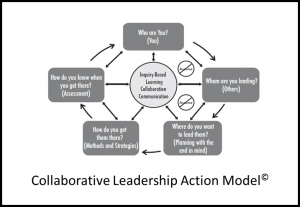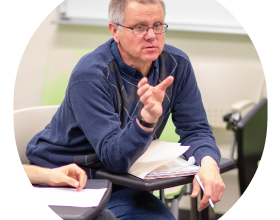When working with a group of students, players, or employees, have you ever found yourself starting a sentence . . . When I was their age? When I was in school? When I got my first job? We did this, or we did that, or this or that worked for me, or we would have never done that. I know that I have done it. In fact, I still do it, but not as often. All of these statements reflect an inward-looking focus on you. I can hear you saying to yourself, he spent his last article emphasizing the importance of knowing about ourselves and our tendencies. This was intentionally done because who you are is the foundation upon which all your relationships will be built. Relationships are at the heart of a team because that is how trust is built—without it you will have a dysfunctional team. Without doubt, it is a challenge to really know yourself and reflect on yourself, because it can make you very uncomfortable. However, an even greater challenge is learning to know the people you are leading, which turns the focus from ourselves to them, in order to help them move to bigger and better things.
We need to constantly remind ourselves that educating, leading, and coaching is not about you. It is about them, the audience whom you are trying to help on their journey. As part of this journey to someplace new, you need to be consistently asking the second key question of Collaborative Coaching and Leadership Action Model, that is, who am I leading?
 The answer to the “who am I leading question?” is not trivial. It requires investing time to learn about the characteristics of those you are coaching or leading. Some of these characteristics are easily observable—age, gender, height, weight, skill level, and behaviors to some extent. Other characteristics are not quite as apparent, including what motivates them, what are the details of their behavioral style, what are their mindsets, what are their values and beliefs, what do they know, what are their strengths, what are their weaknesses, what are they capable of doing, among many other questions. The extent to which any or all of these can be investigated is dependent on the situation and the time available. The more you invest in knowing your team, whether its on the field, in the classroom, or in the boardroom, the better you can build off their strengths, and the more effective you will be.
The answer to the “who am I leading question?” is not trivial. It requires investing time to learn about the characteristics of those you are coaching or leading. Some of these characteristics are easily observable—age, gender, height, weight, skill level, and behaviors to some extent. Other characteristics are not quite as apparent, including what motivates them, what are the details of their behavioral style, what are their mindsets, what are their values and beliefs, what do they know, what are their strengths, what are their weaknesses, what are they capable of doing, among many other questions. The extent to which any or all of these can be investigated is dependent on the situation and the time available. The more you invest in knowing your team, whether its on the field, in the classroom, or in the boardroom, the better you can build off their strengths, and the more effective you will be.

Leave a Reply